Some very old books, plans and mags by David J. Wiggins with thanks to Ian Jopson
.jpg)
Hello yet again, fellow collectors! I have received more nice little gifts from a reader for use in my column this month, courtesy of Ian Jopson of Ipswich. Ian’s bundle of items from a Hobbies collection, include both vintage magazines and plans all with boating content, but I’m beginning this month with a slightly more recent book from Ian’s parcel, entitled Radio Control of Models, written by G. Sommerhoff in 1953.
Gerd Sommerhoff was a schoolteacher at the famous Dragon School in Oxford during the 1950s and was a keen experimenter of radio control in those early days. He usually got his pupils to build the models for him (now theres an idea for any schoolteacher modellers lurking out there), while he concentrated on designing, building and testing the guidance electronics and no doubt this was all a part of the science and technology curriculum at his school. Aircraft, boats and cars are all covered and the author implies that his book is aimed at those already having some experience of radio engineering. That said, the electronic circuits he included (push-pull two valve transmitters and matching hard and soft single valve/carrier wave/ super-regenerative 27Mhz receivers), were pretty standard fare for the era and broadly known and understood. The author credits the IRCMS (International Radio Control Model Society) for some of his ideas and there was nothing new or especially adventurous for 1953, the year this soft cover book was published by Price for five shillings (or 25p in current money terms).
Enjoy more Model Boats Magazine reading in the monthly magazine.
Click here to subscribe & save.
Its still however a good read for any modern radio fan and the models are interesting in themselves. A large, high wing monoplane shown facing Page17 is so 1950s with its generous dihedral and Clarke Y aerofoil section and a jeep on the same page is well made and a nice change from todays plastic buggies. The maritime aspect is represented by the small naval craft I illustrate together with an example of Mr. Sommerhoffs radio receivers. The author leaves single channel and pulsing systems to make an early foray into genuine multi-channel radio with a three channel reed/relay system described. This is very similar to the very first E.D. Ltd/George Redlich designed commercial vibrating reed set. As Mr Redlich, Britains finest early r/c designer, published all his work in an early book around this time, I feel its likely to be a copy as so few were building reed outfits in Britain at this time.
There is good material on DIY radio test equipment and on all the control methods then popular and certainly there was more than enough to get yourself started in 1950s r/c in Mr Sommerhoffs books and this was not his first on the topic.
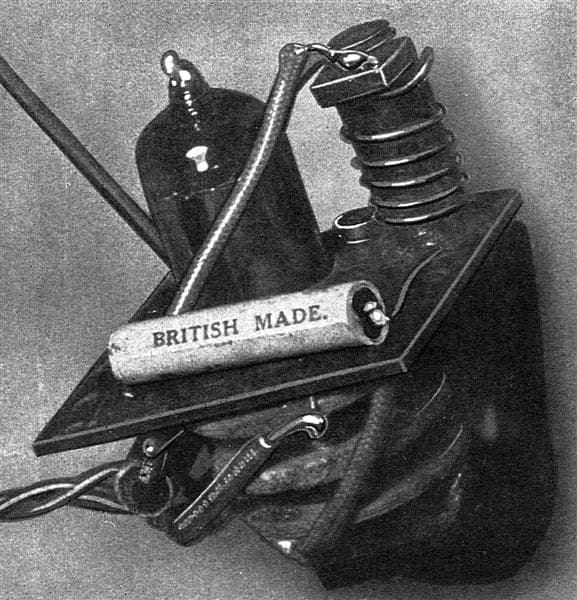
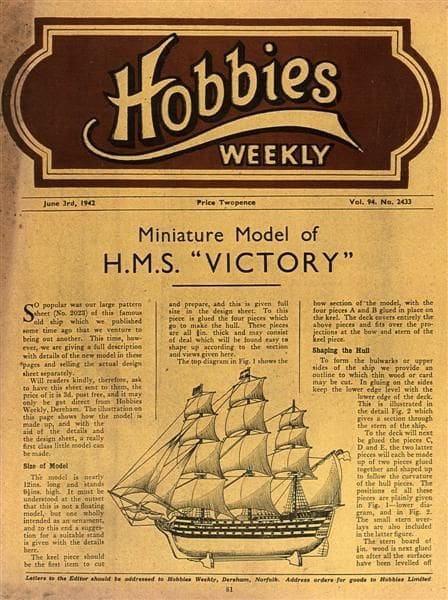
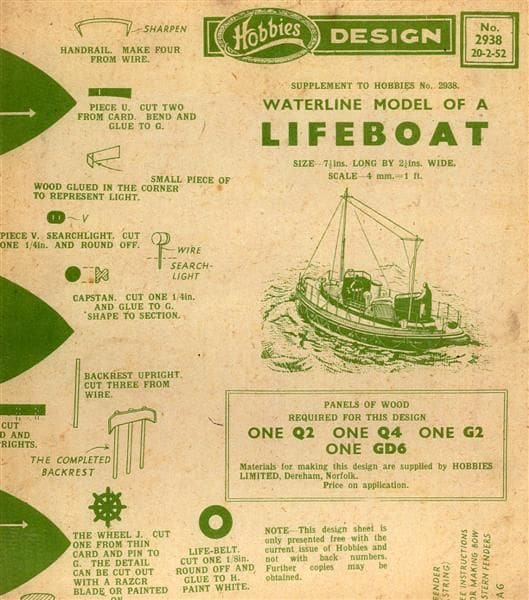
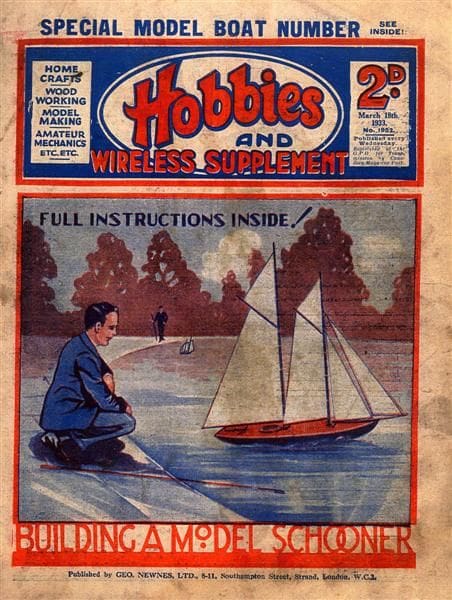
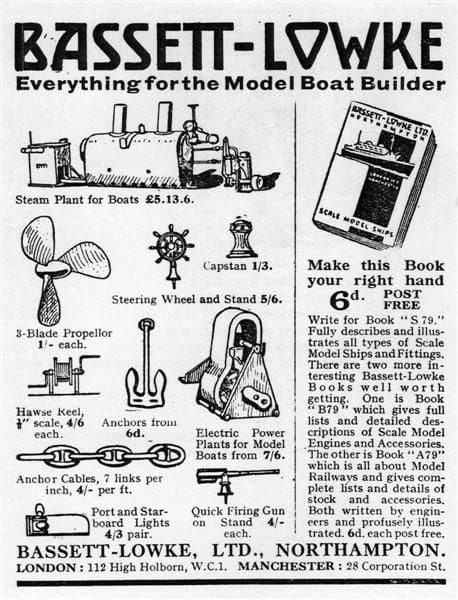
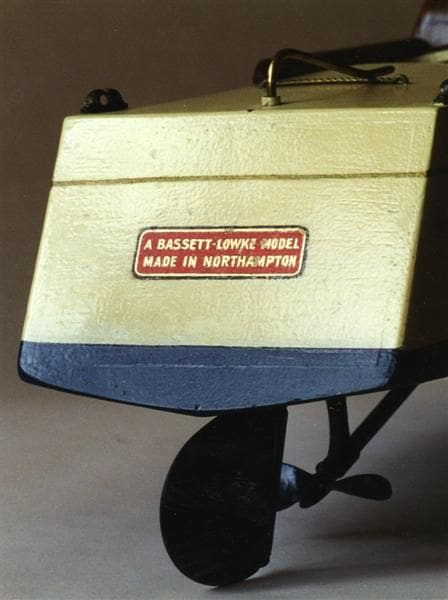
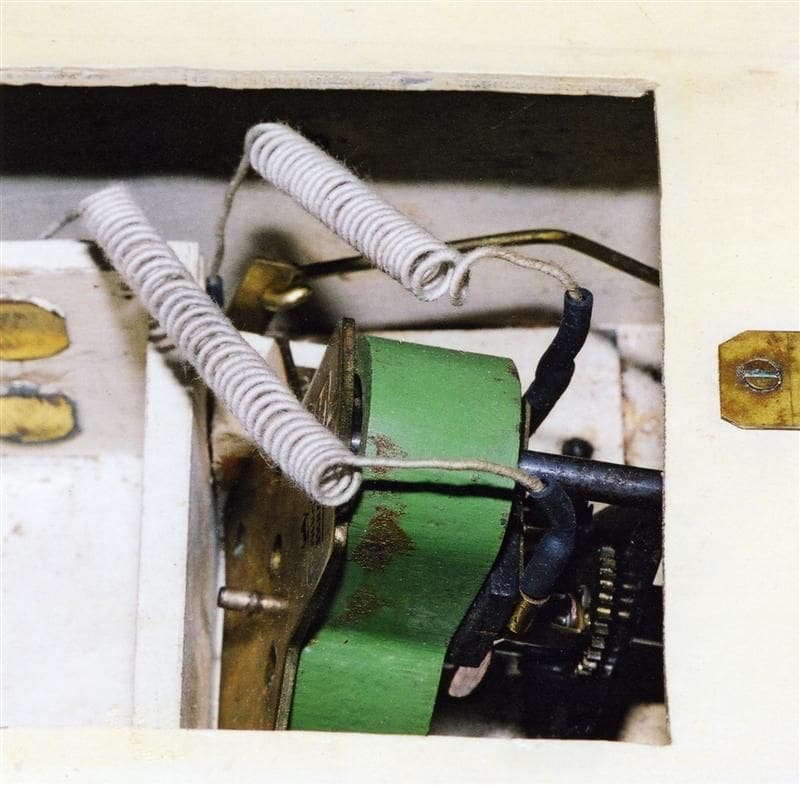
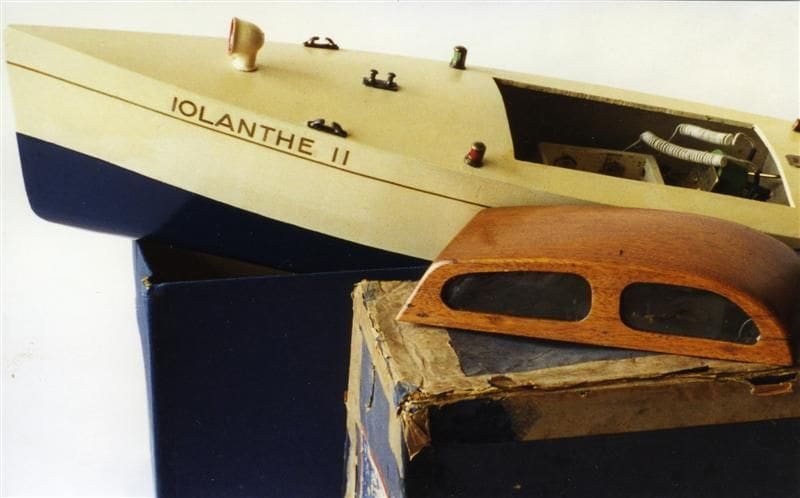
And Hobbies who present…
Ian Jopsons main interest is in Hobbies and their old boat model plans which he collects keenly. He has I must say, sent me some super sample items including a simple plan for a lifeboat from 1952, advertising for the Stuart Turner ST oscillating steam engine and for Bassett-Lowke and a wartime (1942) copy of their popular weekly, with only a few pages on the poor paper typical of those hard years, but I must say that Ive seen worse. This magazine, dating from the summer of that year, has no more than eight pages inclusive of covers and rationing was definitely occurring in all parts of everyday life. The front single colour cover features a small, but appropriate model of Nelsons HMS Victory, before the magazine moves on to craftwork including making ones own wallet. Quote: Now that pocket wallets are so difficult to obtain, the amateur craftsman can well turn his gifted hand to the making of one for himself from a few odd pieces of suitable leather. Quite where this material was to be found in wartime Britain is not explained.
A Silver Arrow
From making wallets, the magazine moves on to an even less likely project – a home made garden cultivator (a tiny plough), all made from wood. In an era when most had an allotment and Dig for Victory was the exhortation, I can see the relevance, but this hopeless looking gadget looks good to fall apart after a week at most. Also from wood, but much more practical is a splendid model car for our children. Called Silver Arrow, its a very deco thing that even now with electronic plastic junk everywhere, a small child would I feel be quite pleased to own it. One is again reminded that our country had been at war for more than three long years as the writer advises: Bits of wood can usually be picked up here and there. Old doors, shelving, boxes etc. can all contribute. This wartime read concludes with a hints and tips page including galleon crows nest tips, making model rope and marking out deck planking. A special editorial note apologises for slowness in mail order, owing to wartime staffing levels as well as material shortages and it is obvious that any sort of modelmaking during this period was seriously difficult. There is not one mention of any sort of powerboat, even steam and everything is very small, static and basic.
A special model boat number
Ians best Ive kept for last and that is a really splendid copy of Hobbies Weekly (price twopence, or a years subscription for 13 shillings), dated March 18th 1933. In really amazing condition, its described as a Special Model Boat Number, which it certainly was.
The main item, featured on the colour cover in a really sweet model yachting painting no less, is Building a Model Schooner by one S J Garratt introduced as A model yacht any handyman can make. Length is 40ins and its a pretty smart thing too. In fact, unlike many model designs published back then, I can see this being quite popular today as its not too big and is conventional in construction with a keel and ribs. The magazine I have is clearly only Part 0ne of a series, so building from this is not possible. To balance sail and power Im illustrating, Displacement and power of steamers, a two page feature by V W D Broughton on the efficiency of steamships. Clearly there is nothing very new about the phrase must have, as on the same pages, Messrs. Stuarts promoted their always terrifically popular S.T. Oscillating Marine Engine with a set of parts costing just 5/- and a finished plant 17/6d under this heading, It was however1933, before you guys all get out your credit cards thinking: Ill take a hundred. It would indeed be fun to know how many of these famous little beginners steam engines have been made. It must be thousands and thousands I think and yes, once I had one of the ST engines. For land models, the magazine included a two page feature on Malcolm Campbells famous Bluebird.
Picture yourself
As usual with Hobbies, the models (even in a model boat special), are mixed in with furniture and general fretwork, but there is Part Two of what looks to be an interesting 15cc two stroke petrol engine designed by EW Twining and a classic advertisement from Bassett-Lowke which almost enters the realm of poetry. Picture yourself a pond, dotted with model boats, sails filling, motors humming. A motorboat puts out from the shore, the sun shining on brass and paintwork. Quickly getting into her stride she leaves every other boat standing. She is a Bassett-Lowke model and is perhaps Iolanthe, the pride of Bassett-Lowkes shipyards as handsome as she is speedy, as British as the Red Ensign floating on her stern. Well readers, I happen to own an Iolanthe II and very nice she is too, but I think thats quite enough of that, and yes I think that’s enough from me for this issue too. Here’s hoping to see you again, here at Collectors Corner Minis in next months Model Boats.



